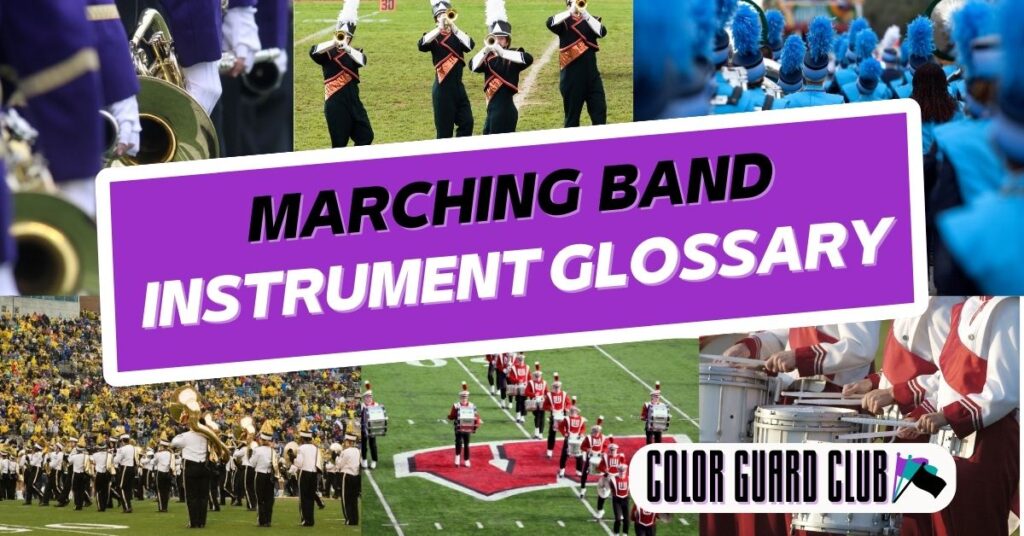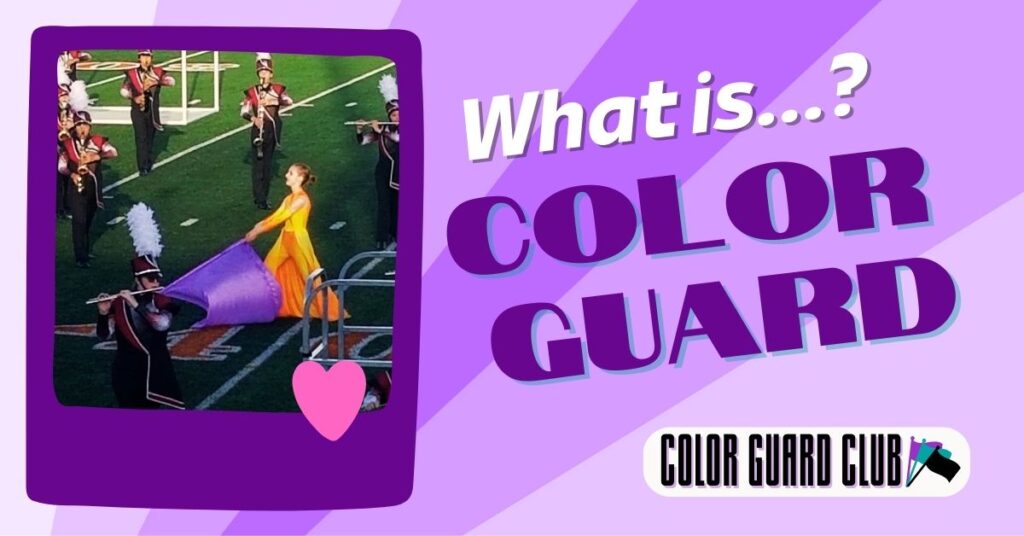When you join color guard, you won’t be playing any instruments, but you’ll be surrounded by band kids who do. While practicing and performing your marching band show, your guard will work with the band to create something awesome. They give us the music to spin to, and we add visual appeal to their show.
When I first joined color guard, I had no idea what most of the band instruments were. I wasn’t even sure what a lot of them sounded like because there were so many different sounds happening at once.
Once I started making more friends in the band, I learned more about all of the instruments and it helped me connect with the band. There are a lot of instruments, and I’m not super familiar with them all, but here’s what I know as a guard kid.
Band Sections.
There are three main sections in marching band besides color guard: Woodwinds, Brass, and Percussion.
I’ll go over some common instruments you might see in these sections, though you may have more or less than in my list. Hopefully I can help you become more familiar with your fellow performers.
Woodwind Instruments.
Flute: Reedless, usually silver-colored, and held horizontally. They play higher sounds and are less loud.
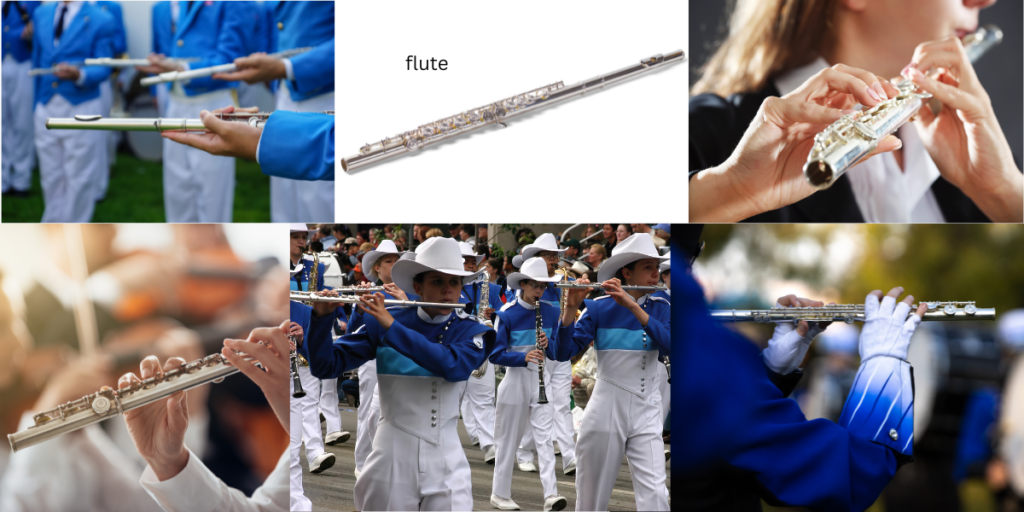
Clarinet: I, fully serious, could always point out a clarinet because Squidward plays it. It’s a reed instrument, usually black and silver, and is cylindrically shaped with the bottom flaring out into a bell shape. Clarinets play both higher and lower.
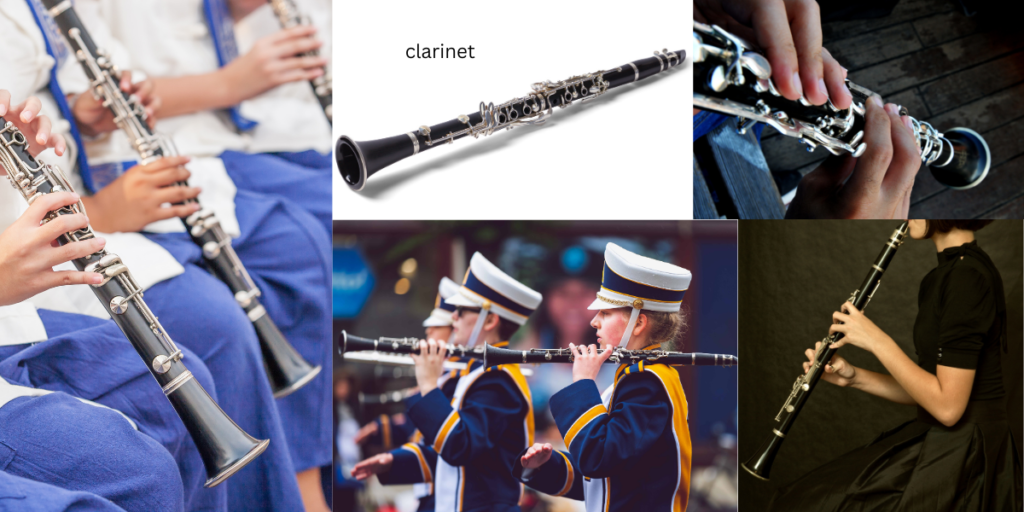
Bass Clarinet: A clarinet that plays lower, and is pretty huge compared to a regular clarinet.
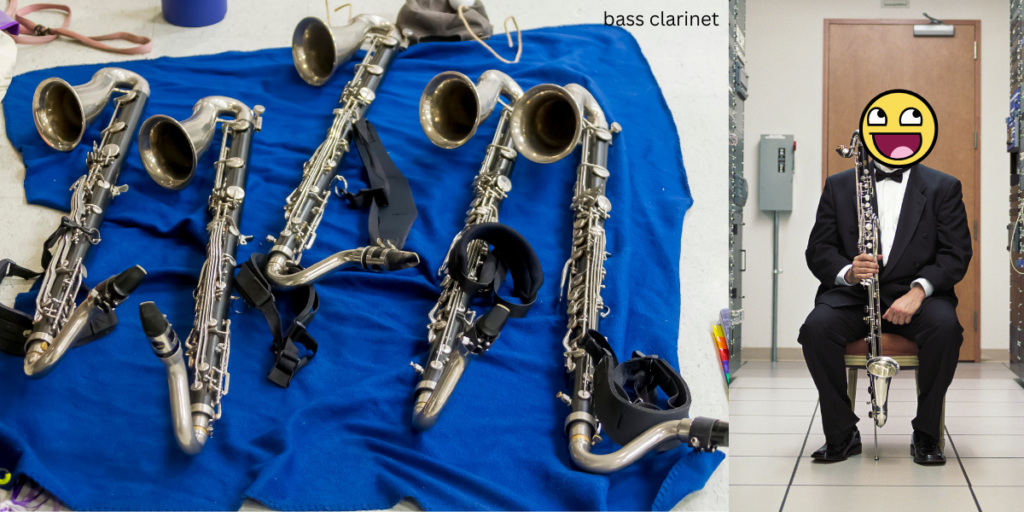
Saxophones (Alto, Tenor, Baritone): Lisa Simpson plays this one, along with a bunch of jazzy musicians I like. Most people are familiar with saxophones, but might not be aware of the different types, or the fact that their reed puts them in the woodwinds section. Alto saxes have a higher pitch, tenor plays lower, and baritone lower than both.
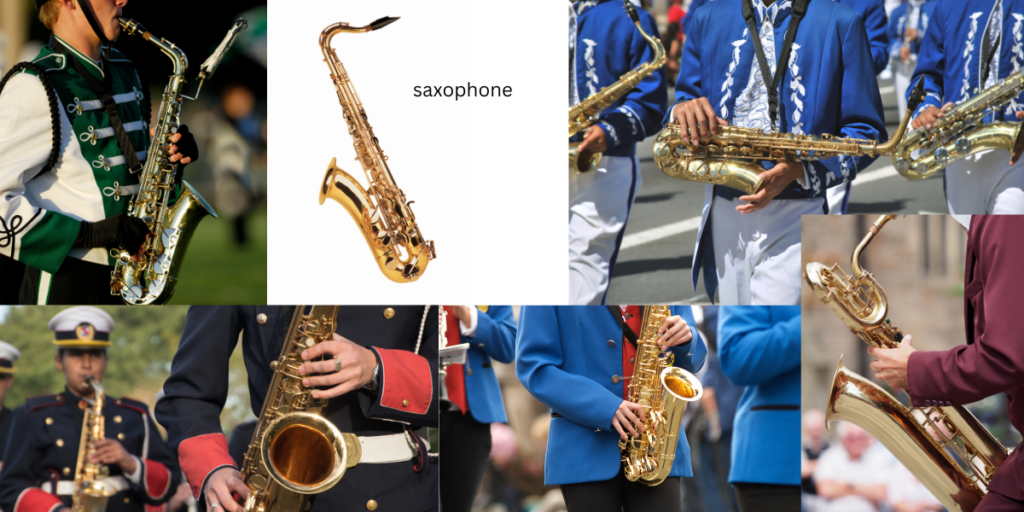
Brass Instruments.
Trumpet: A well-known instrument that’s smaller, and has a mouthpiece and valves. They can be pretty loud and have good range.
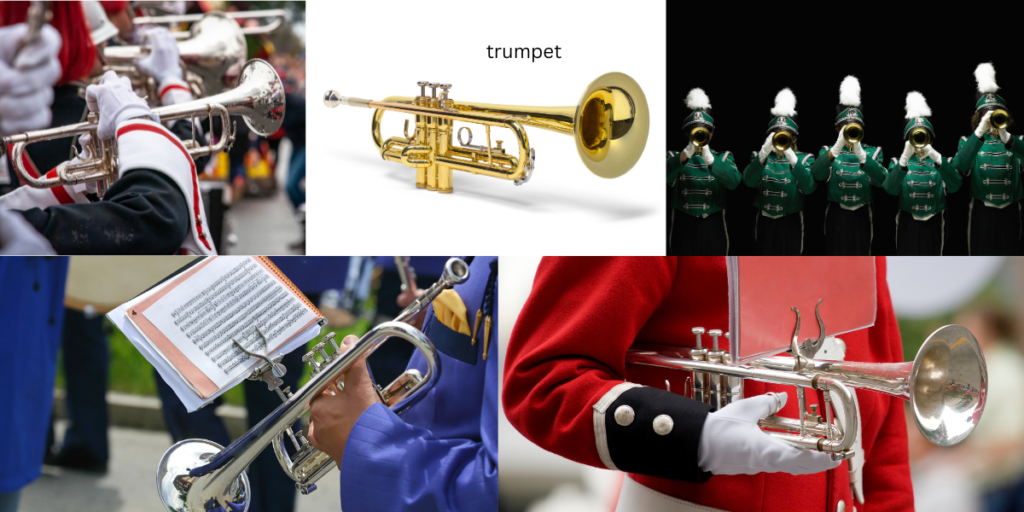
Trombone: Kind of looks like a really long trumpet at first glance. Uses a slide to play different sounds.
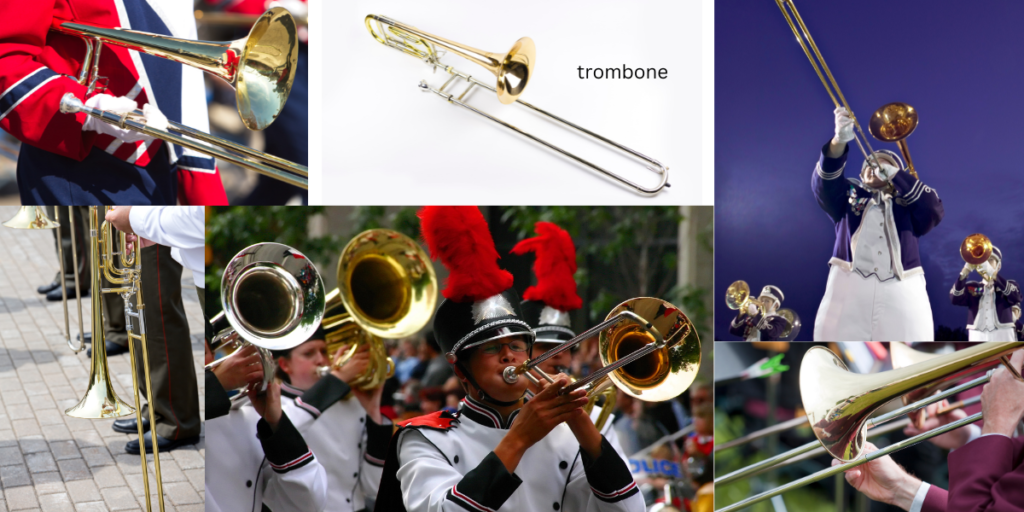
Mellophone: Similar to a french horn, which I believe is more common in concert bands. Looks very twisty like a french horn, but the bell faces forward.
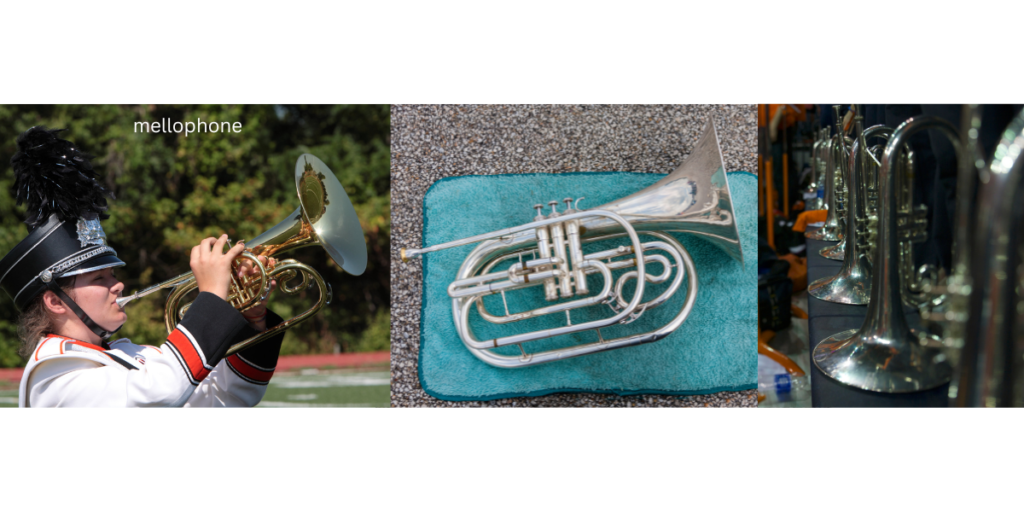
Tuba (Sousaphone, Contra): Tubas are huge, with a deeper sound. Sousaphones and contras are both types of tubas, and the difference between the two are their shapes. The sousaphone wraps around the player, and the contra sits on their shoulder.
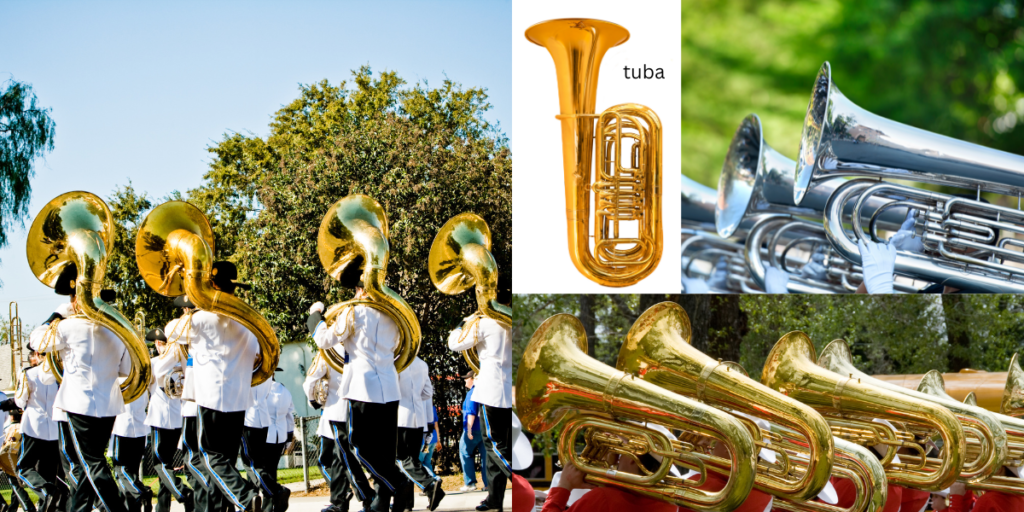
Baritone: Looks very similar to a mellophone, but has a deeper sound.

Percussion Instruments.
Snare drum: A single drum with a very strong sound.
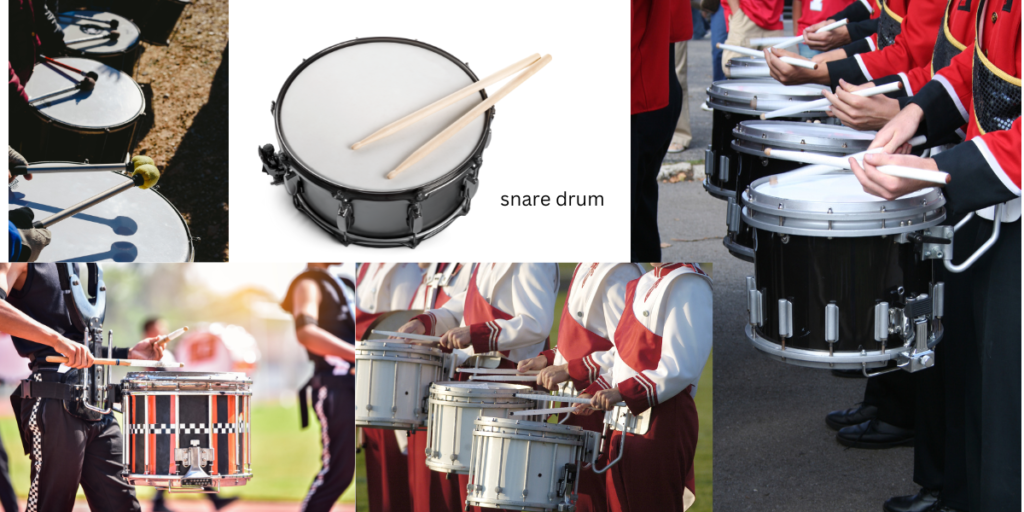
Tenor drums: A group of four to six drums that are sometimes called quads.
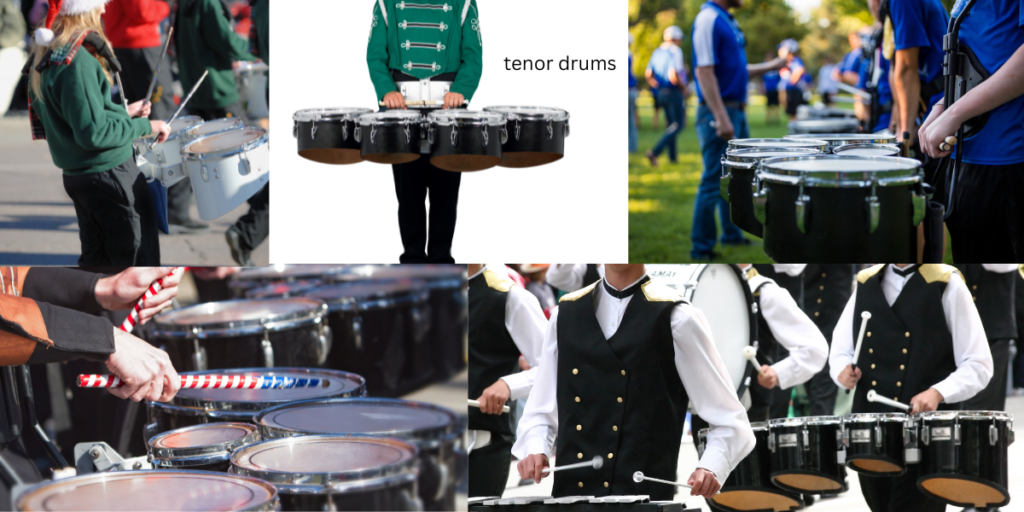
Bass drum: A single drum that is very large and hit with mallets from the sides. Produces a very deep sound.
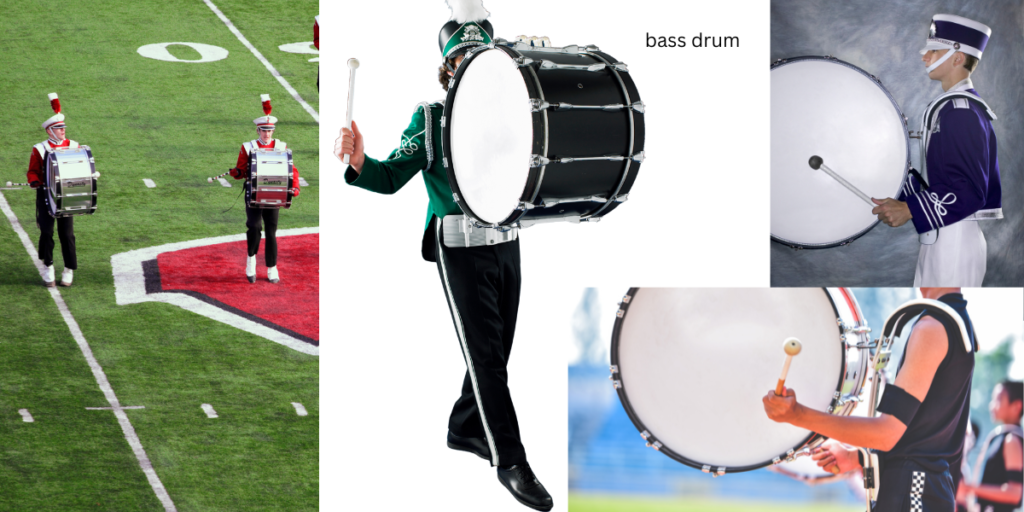
Cymbals: Metal plates that you hit together. The harder you hit them together, the louder the sound.
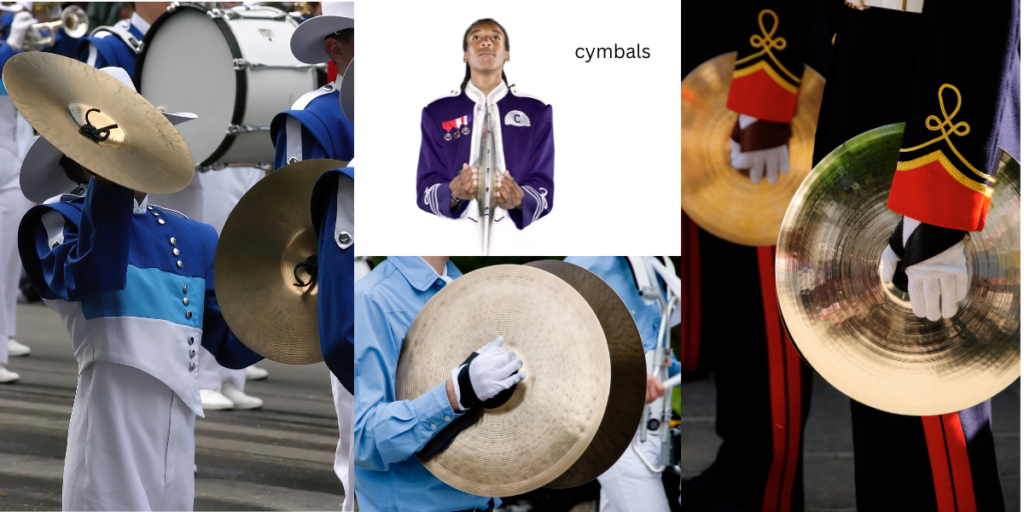
Marimba: A display of wooden keys that you hit with mallets. There are pipes of different lengths under the keys to create certain sounds.
Xylophone: Like a marimba, but without pipes and with a higher range.
Vibraphone: A marimba with metal keys instead of wooden.
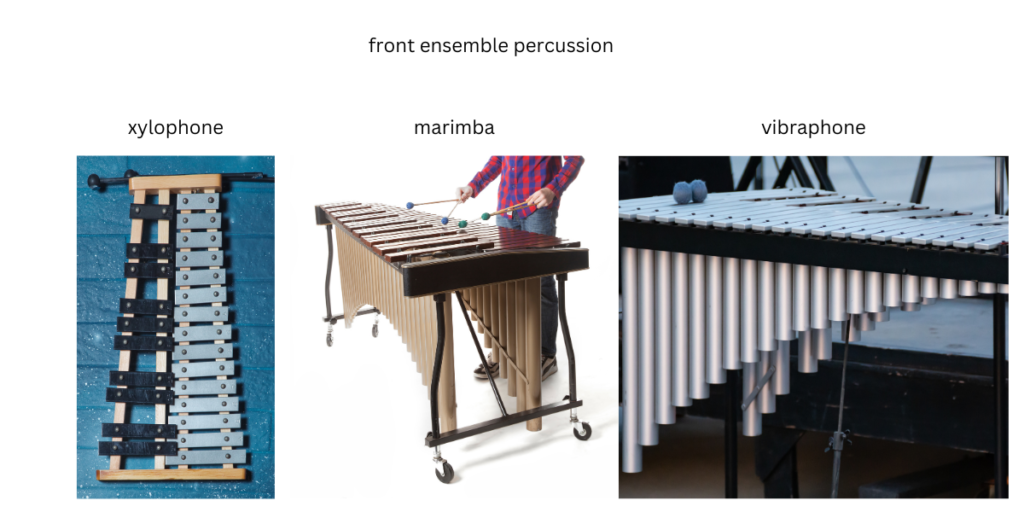
I hope that helps you get more familiar with the band. Let me know if there are any instruments I missed!

